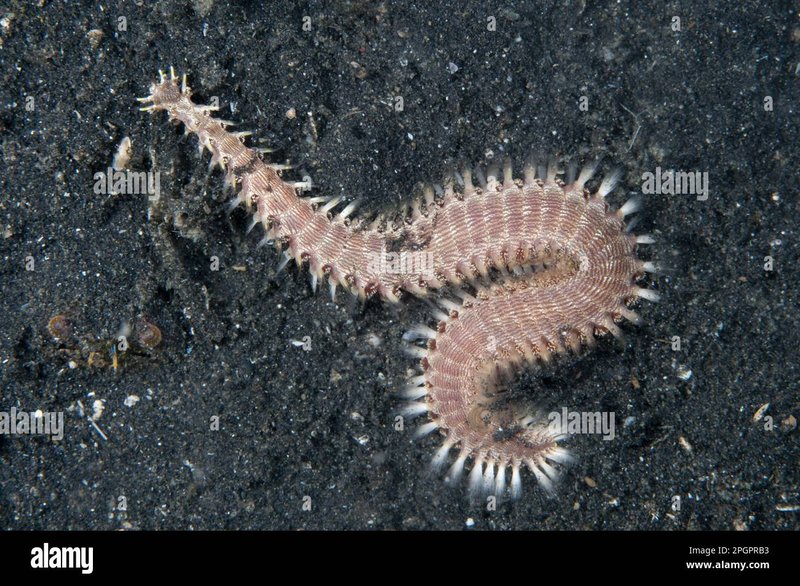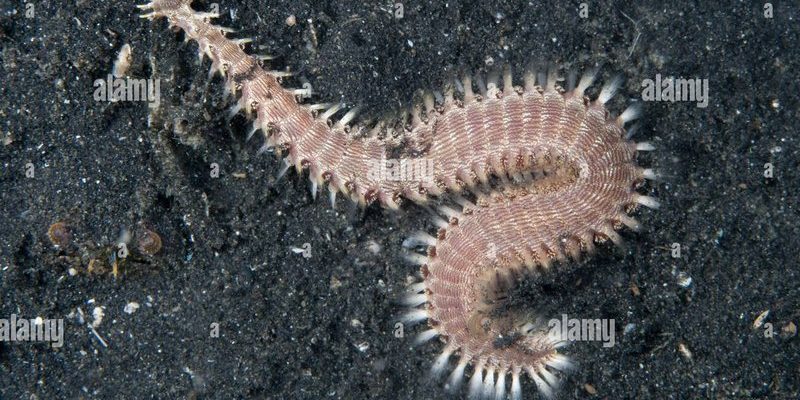
In this article, we’ll dive deep into the world of bristle worms, exploring why their populations sometimes plummet and what that means for the environment. We’ll unravel the complex web of interactions that impact these creatures and, in turn, our oceans. Let’s get started!
What Are Bristle Worms and Why Are They Important?
Bristle worms are a type of segmented worm belonging to the class Polychaeta. They thrive in various marine environments and boast unique features, such as their bristle-like protrusions, which aid in movement and defense. You might find them nestled in sand, mud, or even coral reefs. But why should we care?
These worms serve as key decomposers in the marine ecosystem. They feast on organic matter, breaking it down into simpler substances that can be recycled by other organisms. Think of them as nature’s clean-up crew, ensuring that the ocean remains healthy and balanced. Without them, waste would accumulate, disrupting the delicate balance of marine life.
Bristle worms are also a fundamental food source for many fish and invertebrates. So, when their numbers drop, it’s not just them that suffer; the entire food chain feels the impact.
Common Causes of Bristle Worm Population Crashes
You might be wondering what causes these critical creatures to face population declines. There are several factors involved, often interlinked in a complex dance of cause and effect.
One major culprit is pollution. Chemicals and waste discharged into the ocean can create toxic environments. Heavy metals, pesticides, and plastics can all accumulate, making the waters inhospitable for bristle worms. When their habitat becomes polluted, these worms struggle to survive, leading to sharp declines in their populations.
Another factor is overfishing. As we deplete fish stocks, the balance of the ecosystem shifts. Larger predators can be affected, but so too are the smaller species reliant on healthy populations of bristle worms for food. When fish populations dwindle, this can result in fewer nutrients being cycled back into the ecosystem, further impacting bristle worm survival.
The Role of Climate Change
Let’s talk about climate change. Rising ocean temperatures and altered salinity levels are significant threats to marine life, including bristle worms. Warmer waters can disrupt their reproductive cycles, leading to fewer offspring surviving to adulthood.
Ocean acidification is another significant concern. As carbon dioxide levels rise, oceans absorb more of this gas, causing water to become more acidic. This acidity can harm the delicate structures of the worms, making it difficult for them to thrive. In essence, climate change is like a domino effect, tipping the scale in favor of factors that lead to population crashes.
Signs of a Bristle Worm Population Decline
So, how can you tell when bristle worm populations are crashing? There are some clear indicators that marine life experts look for.
1. Decreased Visibility: If you used to see bristle worms thriving in a particular area and suddenly notice fewer or none at all, that’s a red flag.
2. Altered Biodiversity: A decline in bristle worms can lead to sudden increases in algae and dead organic matter. This change can affect other marine species, leading to a less diverse ecosystem.
3. Changes in Fish Behavior: As the food chain shifts, fish that rely on bristle worms for sustenance may move elsewhere in search of food, signaling a shift in the local marine balance.
Keeping an eye out for these signs is essential for understanding the health of marine environments.
Ecosystem Impact of Bristle Worm Declines
When bristle worm populations decline, the consequences ripple throughout the ecosystem.
Nutrient Cycling: Without bristle worms to break down organic material, nutrient cycling becomes sluggish. This slowdown affects the entire food web, from the smallest organisms up to larger fish and mammals that rely on healthy ecosystems.
Increased Algal Blooms: A sudden reduction in bristle worms can result in nutrient imbalances, leading to algal blooms. These blooms can deplete oxygen levels in the water, creating dead zones where life cannot thrive.
Economic Implications: For communities reliant on fishing and tourism, the decline of bristle worms ultimately translates into economic challenges. Healthy marine ecosystems are crucial for sustaining livelihoods and maintaining local economies.
What Can We Do to Support Bristle Worm Populations?
Here’s the thing: While the decline of bristle worms is concerning, there are actions we can take to help support their populations.
1. Reduce Pollution: Advocating for cleaner water policies and reducing plastic use can significantly benefit marine life, including bristle worms. Simple actions like recycling or participating in beach clean-ups can make a difference.
2. Sustainable Fishing Practices: Supporting local fisheries that use sustainable practices can help ensure that fish populations remain healthy. This balance benefits not only fish but also the entire ecosystem that relies on them.
3. Educate Others: Sharing knowledge about the importance of bristle worms and marine ecosystems can inspire greater care for our oceans. The more people understand, the more likely they are to take action.
Every little effort adds up, creating a broader impact on ocean health.
Understanding the decline of bristle worm populations is a window into the health of our oceans. When these tiny creatures face challenges, it’s not just a problem for them—it’s a sign that the ecosystem is under stress. By exploring the reasons behind these declines and taking steps to protect marine life, we can play a part in keeping our oceans vibrant and flourishing.
So next time you picture that beach teeming with life, remember the bristle worms lurking beneath the surface and how crucial they are to the health of our beautiful blue planet. Let’s all do our part to support them and the intricate web of life they help sustain.

